Firefox Isn’t Opening: 5 Fixes

Having trouble with Firefox not opening on your PC or Mac? Use the steps in this guide to troubleshoot the problem.
If you prefer to open up your web pages in Firefox, you’re going to be in trouble if Firefox isn’t opening on your PC. I don’t often have problems with Firefox, but when I do, it can be tricky to diagnose. Thankfully, there are a few common fixes I always run through to resolve any problems with Firefox not opening on my PC. Here are a few of my favorites.
Restart Your PC or Mac
When Mozilla Firefox isn’t opening, a good first fix to try is to restart your computer. This will often resolve issues where programs have become unresponsive or are facing temporary glitches. Before restarting, make sure that you’ve saved any open (and unsaved) files so you don’t lose any of your data.
On Windows 10 or 11, right-click the Start menu and select Shut down or Sign Out > Restart. On a Mac, click the Apple menu icon (top-left) and press Restart.
After your computer has restarted, try to open Firefox again.
Create a New Firefox Profile
Still can’t load up Firefox? Your Firefox profile (containing your browser favorites, history, and user settings) might be corrupted. You can test if this is the case by creating a new profile to bypass the problem.
To create a new Firefox profile, you can use the Profile Manager, which you can launch via the Run box on Windows or Terminal on Mac.
- First, make sure that Firefox isn’t running in the background. If it is, force it to close using Task Manager.
- On Windows, press the Windows key + R, type firefox.exe -P in the Run box, then click OK.

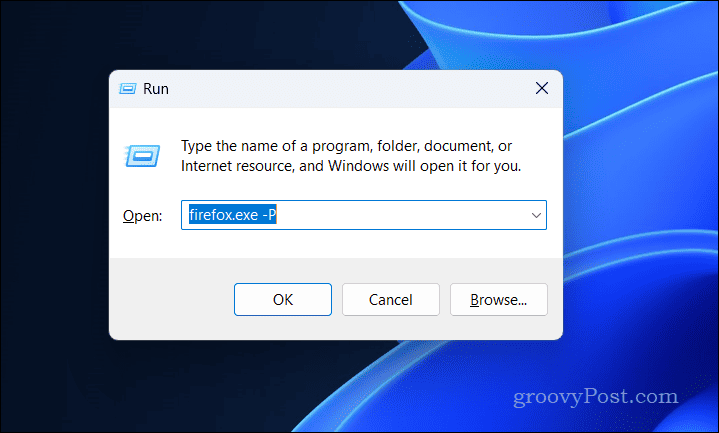
- On a Mac, open the Terminal via the Launchpad, type /Applications/Firefox.app/Contents/MacOS/firefox-bin -P, then press Enter.
- In the Profile Manager window, click the Create Profile button.

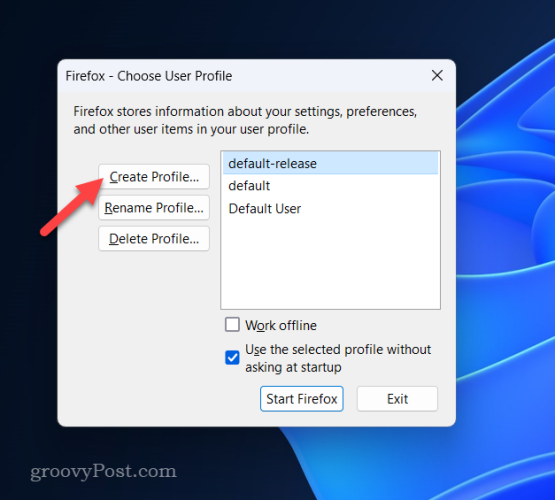
- Click Next in the Create Profile Wizard window.
- Type a name for your new user profile into the Enter new profile name box, then press Finish.


- Once created, select your profile from the Choose User Profile menu, then press Start Firefox.

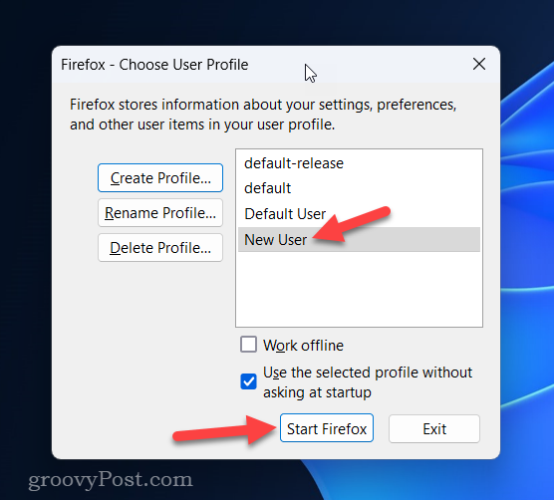
If Firefox starts correctly, the problem is with your user profile. You’ll need to manually back up your profile data (such as your favorites) from your older profile and transfer them to your new profile to start using your browser again.
Delete Firefox Startup Cache
If Firefox won’t open, clearing the startup cache can often resolve the issue. The startup cache includes files Firefox uses to speed up the launching process—if there’s a problem with this data, it can’t run. Deleting this virtual cache doesn’t affect your personal data, but some launch settings might be reset in the process.
To delete the Firefox cache on a Windows PC, follow these steps.
- Close Firefox entirely—use the Task Manager to make sure all Firefox processes have ended.
- Next, press the Windows key + R on your keyboard to open the Run box.
- In Run, type %localappdata%\Mozilla\Firefox\Profiles\ and click OK.

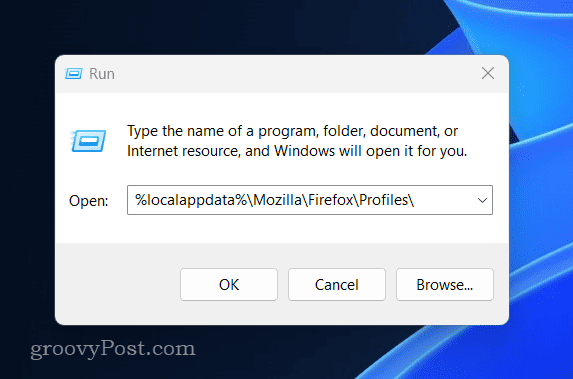
- Locate the folder named startupCache in your profile folder. If you have trouble finding it, look for it with a .default suffix in your preferred user profile folder.

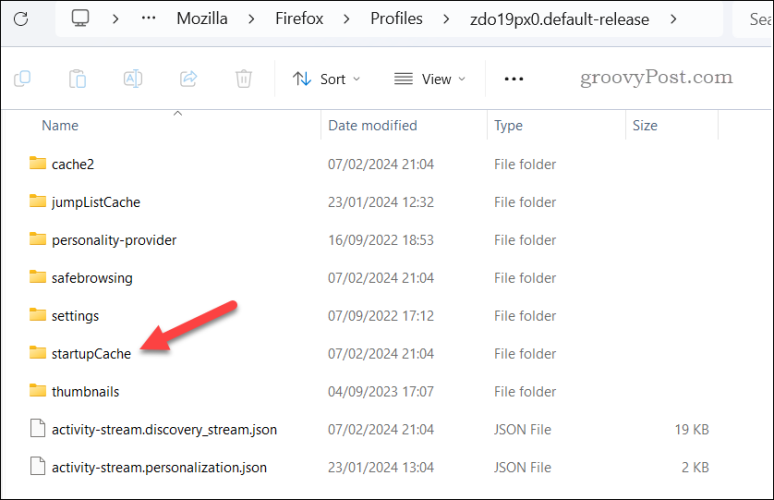
- Delete all the files inside the startupCache folder.


- Once deleted, open Firefox again. It should now create a new startup cache and (hopefully) launch successfully.
Disable or Remove Problematic Firefox Add-Ons
Did you install a new Firefox add-on recently? If your Firefox startup problems began afterward, you may need to disable or remove it to fix the problem.
Run Firefox in Troubleshoot Mode
A good way to test if your add-ons are the problem is by running Firefox in troubleshoot mode. This opens up Firefox without any extensions or add-ons running—just the basic browser. If your browser opens up, then your extensions could be the problem.
To start Firefox in troubleshoot mode, press and hold the Shift key while opening your browser. You’ll see a warning—click Open to confirm that you want to open in troubleshoot mode.
Uninstall Firefox Add-Ons
Once you’re in troubleshoot mode, you can remove any Firefox add-ons that you think might be preventing Firefox from opening. To uninstall unwanted Firefox add-ons, follow these steps.
- Click the Firefox menu icon in the top-right and select Add-ons and Themes. Alternatively, type about:addons in the address bar and press Enter.

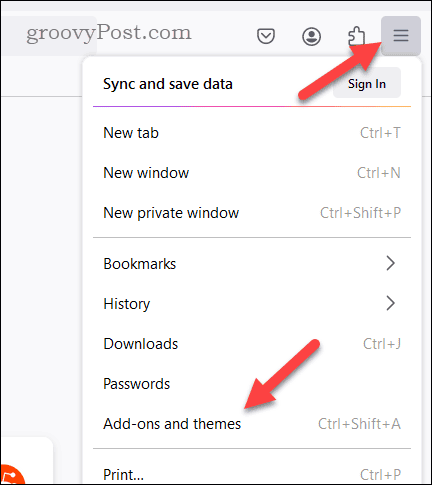
- Navigate to the Extensions or Themes panel and locate the Firefox extension or theme that you’re looking to remove.
- Click the menu icon (3 dots) next to the add-on or theme and select Remove.

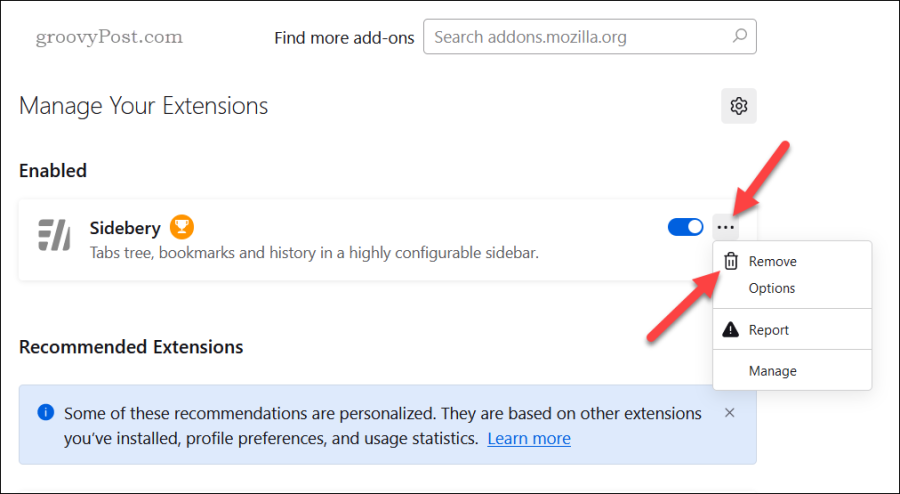
- Repeat these steps for any other extensions you want to remove, then restart your browser to see if the problem is resolved.
Refresh Firefox
In Firefox terms, refreshing the browser doesn’t just mean hitting the F4 key. Instead, you can ‘refresh Firefox’ to reset it and return it to its default state if it isn’t loading or opening up pages. You won’t lose your favorites, but you will lose any extensions you’ve installed. To reset (or ‘refresh’ Firefox), follow these steps.
- Click the menu icon in the top-right and select Help > More troubleshooting information.

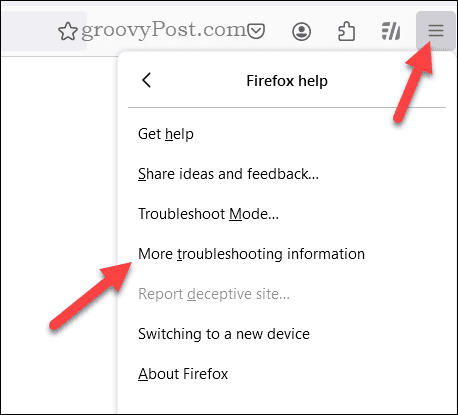
- In the Troubleshooting Information menu, click the Refresh Firefox button.

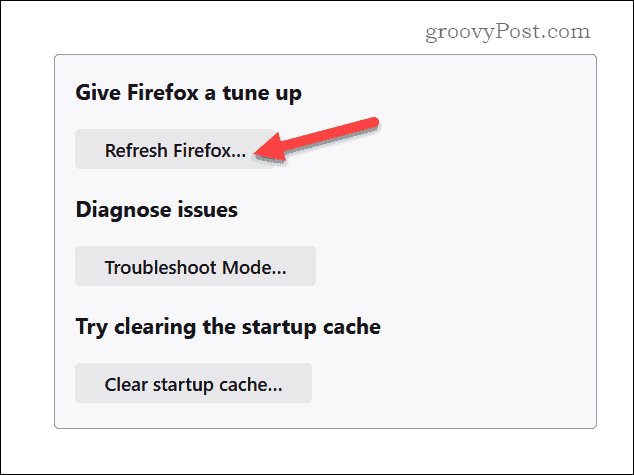
- Confirm you want to reset your browser by clicking Refresh Firefox.

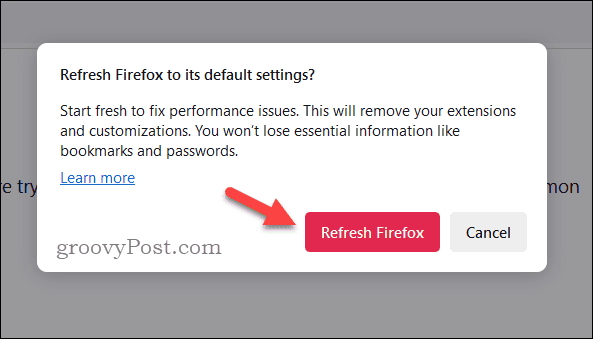
Once the process is complete, your browser will restart. You’ll need to reinstall any extensions you previously had installed and configure any lost settings afterward.
Update or Reinstall Firefox
When there’s a problem with Firefox that you can’t fix, your last resort is to try to update your browser or manually reinstall it.
Check for Firefox Updates
Firefox should update automatically but, if it isn’t, you can check for updates at any point yourself using these steps.
- First, open Firefox and click the menu icon in the top-right.
- From the menu, select Help > About Firefox.

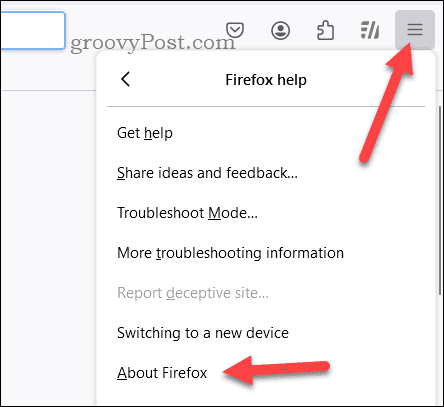
- In the About menu, Firefox will automatically check for updates and download them (if available).


- Once the download is complete, close and restart Firefox to install it.
Reinstall Firefox
Still having trouble with Firefox not opening? It’s time to reinstall Firefox.
You’ll need to uninstall it from your PC first. Mac users will also need to delete the app before they proceed. Once that’s complete, follow these steps.
- First, download the latest version of Firefox from the official Mozilla website.
- Run the launcher—the process should begin automatically on Windows.
- On Mac, you may need to drag the Firefox icon into the on-screen folder to complete the process.
- Once the process is complete, launch Firefox to check if it opens.
Fixing Firefox Faults
Don’t be disturbed if Firefox isn’t opening on your PC. A corrupt file here or a broken extension there can stop Firefox from opening up, but by following the steps above, you should be able to resolve the problem.
If you’re still having trouble, however, you may need to consider your options. There are other browsers you can try in the short term, whether it’s Firefox, Microsoft Edge, or even a privacy-focused alternative like DuckDuckGo.


























